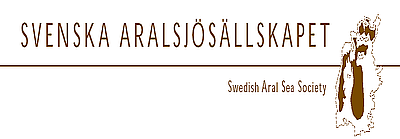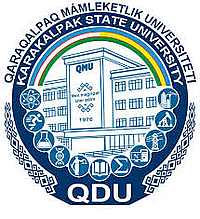Välkommen till Svenska Aralsjösällskapet
2c.
Climate policies
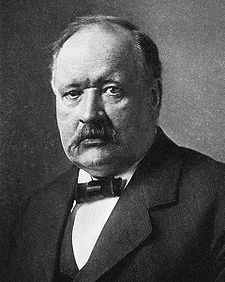 The general understanding that the global climate will be influenced by emissions of carbon dioxides from combustion of fossil carbon is old, and a first estimation of the size of the effect (fairly accurate!) was published by Swedish chemist Svante Arrhenius in 1896. As use of oil, coal, and gas increased, scientist got worried and in 1988 the Intergovernmental Panel on Climate Change (IPCC) was formed by the World Meteorological Association (WMO) and UN Environmental Programme (UNEP) to study and follow the development. IPCC is coordinating and reporting on the research of thousand of scientists. The assessment reports, the most recent is no 4 from 2007, summarizes the collective understanding of climate change and its consequences as well as projections into the future under different assumptions. In the summary for policymakers in AR4, we read that 1) warming of the climate system is unequivocal. 2) Most of the observed increase in globally averaged temperatures since the mid-20th century is very likely (>90%) due to the observed increase in anthropogenic (human) greenhouse gas concentrations.
The general understanding that the global climate will be influenced by emissions of carbon dioxides from combustion of fossil carbon is old, and a first estimation of the size of the effect (fairly accurate!) was published by Swedish chemist Svante Arrhenius in 1896. As use of oil, coal, and gas increased, scientist got worried and in 1988 the Intergovernmental Panel on Climate Change (IPCC) was formed by the World Meteorological Association (WMO) and UN Environmental Programme (UNEP) to study and follow the development. IPCC is coordinating and reporting on the research of thousand of scientists. The assessment reports, the most recent is no 4 from 2007, summarizes the collective understanding of climate change and its consequences as well as projections into the future under different assumptions. In the summary for policymakers in AR4, we read that 1) warming of the climate system is unequivocal. 2) Most of the observed increase in globally averaged temperatures since the mid-20th century is very likely (>90%) due to the observed increase in anthropogenic (human) greenhouse gas concentrations.
Based on these insights, the 1992 UN conference in Rio de Janeiro (UNCED) negotiated and signed a United Nations Framework Convention on Climate Change (UNFCCC). The convention went into force in 1994 when 50 states had ratified. Today 194 states are parties to the convention, that is, all states on Earth take part. The objective of the Convention is to stabilize greenhouse gas concentrations "at a level that would prevent dangerous anthropogenic (human induced) interference with the climate system." The convention asks for mitigation (reduction) of climate change, but there is also adaptation to climate change mentioned.
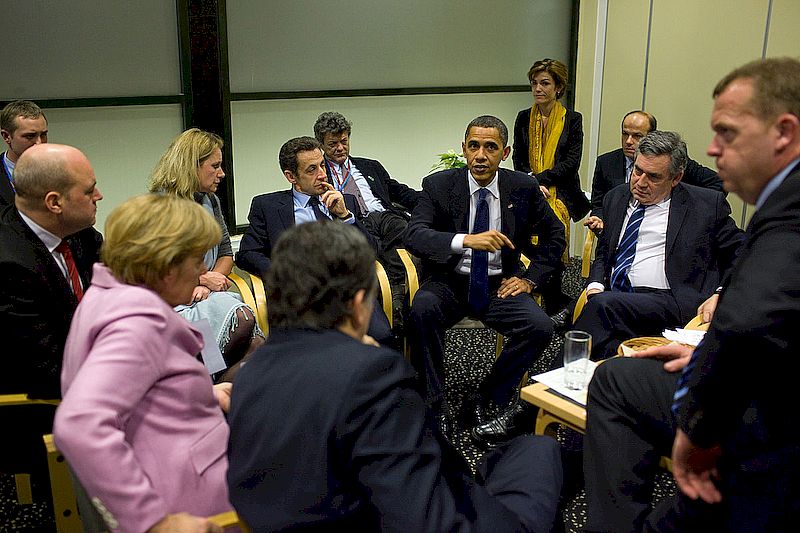
President Barack Obama briefs European leaders, including British Prime Minister Gordon Brown, French President Nicolas Sarkozy, EU President Swedish Prime Minister Fredrik Reinfeldt, German Chancellor Angela Merkel, European Union Commission President Jose Manuel Barroso, and Danish Prime Minister Lars L. Rasmussen, following a multilateral meeting at the United Nations Climate Change Conference in Copenhagen, Denmark, Dec. 18, 2009. Photo by Pete Souza.
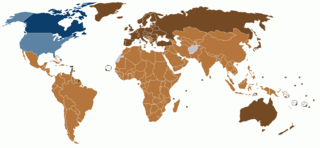 The activities under the convention are negotiated at Conferences of the Parties (COPs), mostly organized yearly. At the 1997 COP3 in Kyoto, Japan, a Protocol, a detailed plan of the actions required by each party of the convention, was signed. The Kyoto Protocol contains binding targets for 37 industrialized states and the European Community (so-called Annex 1 countries) to reduce GHG emissions by 5% compared to the 1990 levels for the five-year period 2008-2012. Developing nations (Annex 2 countries) did not have obligations according to the Protocol. Rules for implementing the Kyoto Protocol were adopted at the COP7 in Marrakesh in 2001. The Protocol entered into force in 2005 after Russia had signed. Of the major emitters, USA has not entered the Protocol (meaning that the total target decreased to 4.2% reductions), while Australia with a new government joined in 2008 and Canada left in 2012.
The activities under the convention are negotiated at Conferences of the Parties (COPs), mostly organized yearly. At the 1997 COP3 in Kyoto, Japan, a Protocol, a detailed plan of the actions required by each party of the convention, was signed. The Kyoto Protocol contains binding targets for 37 industrialized states and the European Community (so-called Annex 1 countries) to reduce GHG emissions by 5% compared to the 1990 levels for the five-year period 2008-2012. Developing nations (Annex 2 countries) did not have obligations according to the Protocol. Rules for implementing the Kyoto Protocol were adopted at the COP7 in Marrakesh in 2001. The Protocol entered into force in 2005 after Russia had signed. Of the major emitters, USA has not entered the Protocol (meaning that the total target decreased to 4.2% reductions), while Australia with a new government joined in 2008 and Canada left in 2012.
What we need is no less than a transition to a fossil fuel free world, but it is far away. It is well understood that the reductions of emission required by the Kyoto Protocol is very far from sufficient to mitigate (combat) climate change as it only covers some 15% of the global emissions, and obligations are limited. Business as usual, if nothing is done, will lead to very dangerous interference with the climate system. In 2011 emissions are still increasing. China and India are increasing their use of fossil fuels rapidly, and the USA remains on a very high level. Efforts to establish a global agreement on the reduction of emission of GHGs have been on the agenda of the COPs since long. The 2009 COP15 in Copenhagen was set up to reach an agreement, but failed. The so-called Copenhagen Accord only says that the goal of the convention is to keep temperature increase within 2 degrees, but no commitments. The 2011 COP17 in Durban again aimed for an agreement, but ended with the so-called Durban Package, a roadmap for how to work for an agreement to be implemented in 2020. This time, all states signed, but it does not contain any binding commitments on reductions of emissions. At the COP18 in Doha in 2012 the parties to the Kyoto Protocol agreed to a second period 2013-2020 with a total reduction of 18% below the 1990 levels for the Annex 1 countries. Objections from Russia, Ukraine, and Belarus may change this. The establishment of a Climate fund, to cover costs for developing countries to adapt to climate change, was agreed.
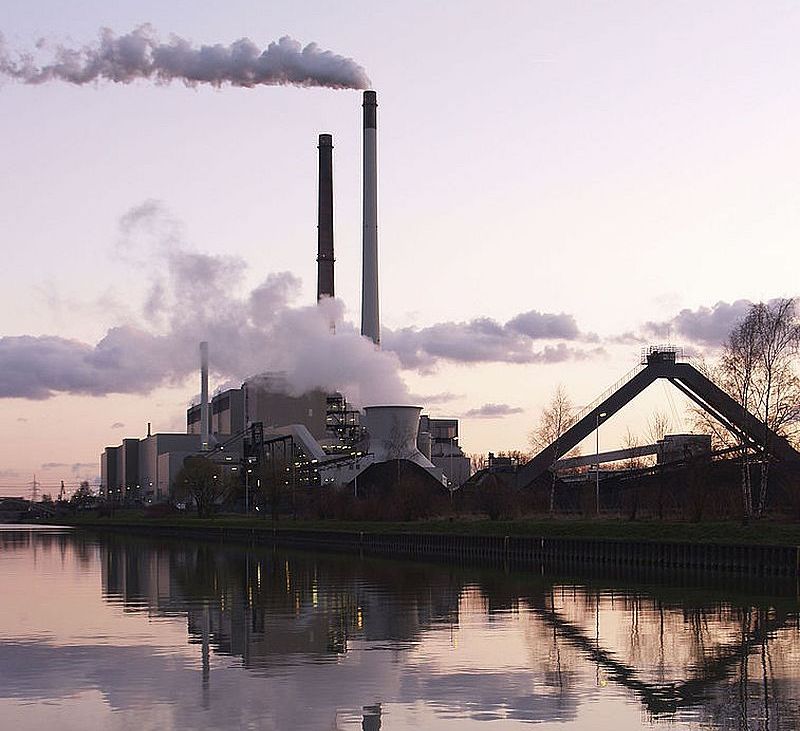 Due to emissions trading, coal may become a less competitive fuel than other options. Coal power plant in Datteln (Germany) at the Dortmund-Ems-Kanal. Photo: Arnold Paul
Due to emissions trading, coal may become a less competitive fuel than other options. Coal power plant in Datteln (Germany) at the Dortmund-Ems-Kanal. Photo: Arnold Paul
The European Union states divided the Kyoto obligations of reduction of emissions between themselves unequally, depending on economy and level of emissions. Based on the COP3 in Kyoto, the EU established a cap and trade system for CO2, called European Trading System, ETS. In this system a number of major European industries, presently about 11 000, have been given allowances (rights) to emit specified amounts of CO2. Those emitting more have to buy additional rights and those, which can reduce their emissions, may finance the costs of the investments needed by selling emission rights. These are sold and bought in a stock market, just like shares. In 2010 the price for the right to emit 1 ton of CO2 was about 13 Euros, but it has since then declined. The ongoing second trading period started in 2008 and will end in December 2012. The third trading period, 2013-2020, will include more GHGs, especially methane and nitrous oxide, more sections especially air traffic, and reduced allowances of emission rights. The so-called Clean Development Mechanism, CDM, which allows Annex 1 parties to count emission reductions from investment in developing countries, will also continue.
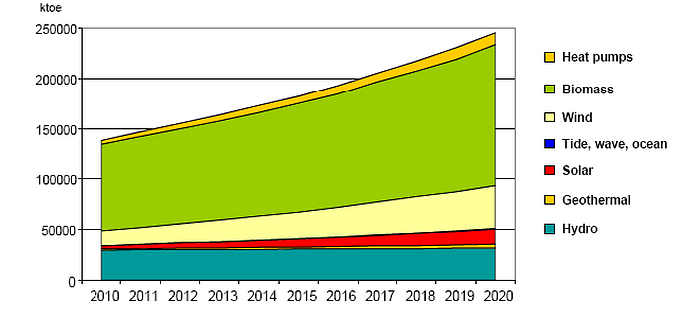 EU's climate and energy policy nicknamed 20-20-20 became legally binding in 2009. It includes 20% reductions of CO2 emissions compared to 1990 levels, 20% renewable energy, and 20% less primary energy (the energy efficiency goal) compared to projected levels all by 2020. Allowances of the 3rd period of ETS will be set to achieve the emission reductions. EU has offered the other parties of the Climate Convention to increase its levels to 30% reduction of emissions “if others do the same”, an offer not accepted by anyone. It appears that both levels are insufficient to keep global warming within the 2-degree target even if everyone joined; EU only accounts for just above 10% of global emissions.
EU's climate and energy policy nicknamed 20-20-20 became legally binding in 2009. It includes 20% reductions of CO2 emissions compared to 1990 levels, 20% renewable energy, and 20% less primary energy (the energy efficiency goal) compared to projected levels all by 2020. Allowances of the 3rd period of ETS will be set to achieve the emission reductions. EU has offered the other parties of the Climate Convention to increase its levels to 30% reduction of emissions “if others do the same”, an offer not accepted by anyone. It appears that both levels are insufficient to keep global warming within the 2-degree target even if everyone joined; EU only accounts for just above 10% of global emissions.
Each country in the EU as well as outside has its own climate and energy policy to prepare the country for a post peak oil world and mitigate climate change. For this, it uses different policy tools. Especially relevant for climate mitigation are actions taken to increase the share of renewables, and the taxation on carbon dioxide emissions. In the first category belong state subsidies to support change of heating system, to encourage energy efficiency, e.g. insulation of buildings, or energy efficient cars. Germany’s feed-in tariffs offer to buy electricity from all private producers at a fix price, which stimulate investments. Sweden has high carbon dioxide taxation, about 10 eurocent per kg, which makes other fuels than oil and coal more attractive.
Not only international policies, but also market forces and security concerns, contribute to the transition to a fossil fuel free world. As investments in renewable energy improve and become competitive, the emissions will decrease for economic reasons. Secondly, energy security concerns will push counties to reduce their dependency on imported fuels from abroad and politically less dependable countries. Today we see an increasing number of nations, local communities and households investing in local and renewable energy supplies to increase energy security and avoid unpleasant economic surprises.
Materials for session 2c
Basic level
- Climate and Society, a conference presentation by Lars Rydén.
- The United Nations Framework Convention on Climate Change, UNFCCC.
- European Union climate policy and the ETS
- Understanding the COP17 UN Climate Talks – in 3 minutes (YouTube film)
- The EU Renewable Energy Targets
Medium level (widening)
- Read The Unbalanced Carbon Cycle – A Global Problem by Christian Azar and Göran Berndes. In: Man and Materials flows – Towards sustainable materials management.
- Read pages 6-17: Climate economics – the state of the art, Stockholm Environment Institute.
- Carbon Cycle and Global Warming (YouTube film)
Advanced level (deepening)
- Study in some detail Germany’s climate policy (two documents):
Document 1
Document 2 - Study in some detail Sweden’s climate policy.
- Select another country to study its climate policy.
- Conversations with History: Lars-Erik Liljelund (YouTube film, 55 minutes)
References
Karlsson, S. (ed.) 1997. Man and Materials flows – Towards sustainable materials management. Baltic University Press, Uppsala.
BUP Sustainable Development Course
2d.
Energy management strategies
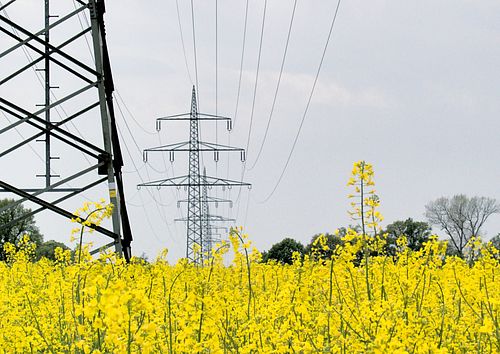 Transport of electrical energy
Transport of electrical energy
Main users of energy in our societies are the transport sector, the building sector and food production. Several countries have in addition some energy intensive industries. Our first question is how much energy do we really need for these purposes? This is the issue of energy sufficiency. At present energy use is close to 100 times the metabolic energy (everyday food for one person), even if it varies quite much between countries, sectors, and individuals. Even if energy is necessary, it may be used more efficiently. Energy efficiency is as well a key task in energy management.
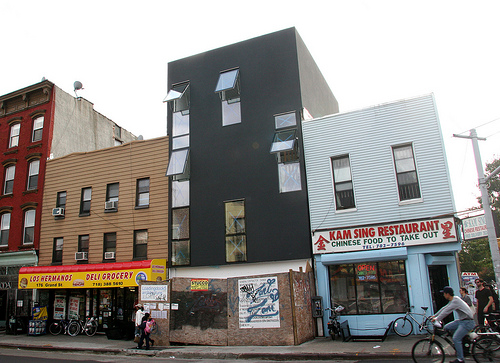 New Williamsburg, Brooklyn house following German Passiv Haus construction standards, for energy efficiency and air tightness.
New Williamsburg, Brooklyn house following German Passiv Haus construction standards, for energy efficiency and air tightness.
The building sector has been very successful in reducing energy needs. The most efficient houses today are the passive houses. These use much less energy (15-25%) for heating and sometimes even have their own supplies of electricity and hot water. Passive houses have efficient insulation, heat exchanger for ventilation, and use heat from persons and machinery. Even if passive houses are not common, low energy houses start to be so. These are slightly more expensive to build, but much less expensive to use. Also, retrofitting of present buildings is possible and profitable. As an example, energy use in the building sector in Sweden could, according to the sector, be reduced by 20% with profitable investments. This figure is probably large also in other countries in the region.
The food sector has several shortcomings which lead to energy wasting. Food waste is large (some 20-30% of edible food) in many places. This can be reduced by simple means, such as better planned shopping, proper storage and taking care of leftovers. This refers both to producers, retailers, and households/restaurants. Different food has very different carbon footprints. Meat production is by far the most energy consuming, while vegetables and potatoes are much less so. But the trend in our societies is that meat consumption is increasing; 80% of the crops on our farmland are used for animal feed. Denmark has five times more pigs than people. Less meat consumption is an important step to reduce energy needs.
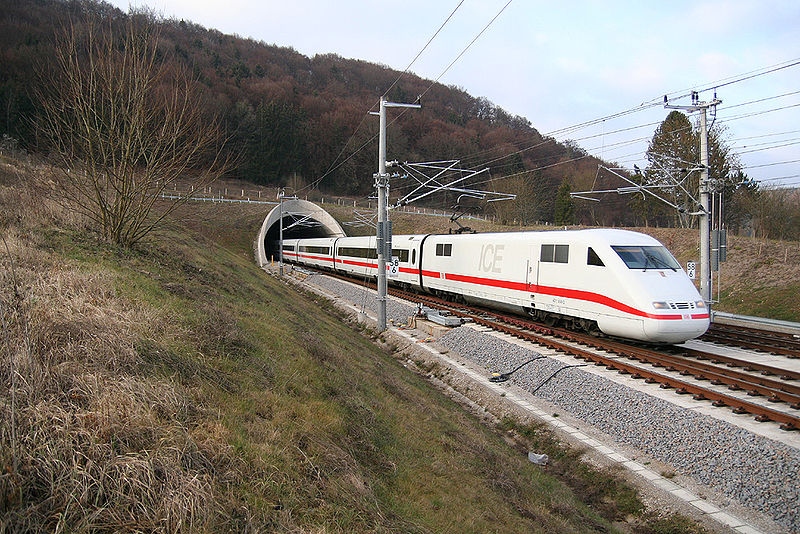
A German ICE high-speed trains leaves the Schellenberg-tunnel at the Nuremberg-Munich high-speed track.
The transport sector is by far the most difficult to improve. It is also the only sector where energy consumption is increasing and fossil fuels dominate. The first concern is to reduce travelling. For example, many meetings may be replaced by video conferencing. Secondly, improving public transport is a main concern, especially in cities, to reduce the role of the private car. Here we also see an important technical development. New biofuels, such as biogas, biodiesel, and bioethanol are introduced. But in the longer term electricity should be introduced since the electric motor is at least 4 times better than the combustion engine for mechanical work; train and tram is even better since rail requires less energy than tyres. Of course, the value of such changes depends on how electricity is produced. Finally, air traffic increases much; at present the environmental impacts of air traffic, including emissions, are not paid by the sector and there is a need for economic reforms. In the end, lifestyle changes are needed. We simply have to travel differently and less.
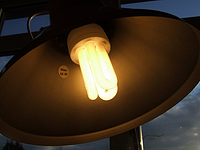 There are many ways to deal with energy management. A general rule is that demand management is better than supply management. Thus, much work is done today to reduce energy use in the consumption phase. Low energy light bulbs, especially LED lighting, are 5 to 10 times more efficient than conventional bulbs. As lighting uses about 28% of electricity in an average household, a fivefold reduction is important. It is also important that machinery such as freezers, washing machines etc is energy efficient. Standby should be avoided, and simple rules, like not lighting garages and toilets when nobody is there, contribute much. In the EU, new directives supporting these changes are introduced.
There are many ways to deal with energy management. A general rule is that demand management is better than supply management. Thus, much work is done today to reduce energy use in the consumption phase. Low energy light bulbs, especially LED lighting, are 5 to 10 times more efficient than conventional bulbs. As lighting uses about 28% of electricity in an average household, a fivefold reduction is important. It is also important that machinery such as freezers, washing machines etc is energy efficient. Standby should be avoided, and simple rules, like not lighting garages and toilets when nobody is there, contribute much. In the EU, new directives supporting these changes are introduced.
On the supply side, the main task is to move from fossil to renewable energy. As already has been described (See Session 2a) this is ongoing in all countries. At present, Sweden has the highest share of renewable energy in the EU, about 49%, followed by Finland and Latvia. The main reasons are good supply of hydropower and much increased use of biomass.
In the industry sector, there are many good examples of energy efficiency programs, although much is left to be done. The pulp and paper industry, which is a high energy user, use the cellulosic fibres for producing paper while the lignin in the wood is turned into black liquor, a highly alkaline dark “soup” with a very high energy content. It is used for energy purposes in some factories, e.g. turned into biodiesel, but this could be much improved. The cement industry is using much energy and also emits carbon dioxide from the process itself (heating calcium carbonate). Building in wood, including multi-store houses and some other constructions, is now improving very much and some traditional uses of cement should be possible to replace. Such a change includes several energy efficiency steps from transport to the building site, the construction itself and maintenance of the building.
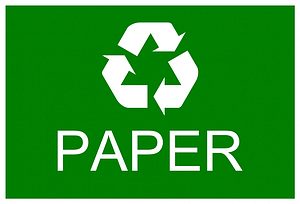 Proper waste management saves much energy. Thus, it costs about 6 times less energy to produce steel from scrap iron compared to virgin ore, a figure that is 30 times for copper and 50 times for aluminium. Recycling paper saves energy as cutting trees is reduced and the production itself saves energy. Household waste incineration (waste to energy step) may provide about 5% of energy in a country.
Proper waste management saves much energy. Thus, it costs about 6 times less energy to produce steel from scrap iron compared to virgin ore, a figure that is 30 times for copper and 50 times for aluminium. Recycling paper saves energy as cutting trees is reduced and the production itself saves energy. Household waste incineration (waste to energy step) may provide about 5% of energy in a country.
In general, both industries and households are reluctant to invest in energy improvements, even if the investments are profitable and money is saved in only a few years. Policies for supporting such investments are thus important. These include taxation on energy as well as subsidies for investments, or loans on good conditions. Several management systems are available for energy improvements. These include Environmental Management Systems, EMS, such as ISO 14001, but since December 2011 a certifiable international standard for energy management has been released, the ISO 50001.
Materials for session 2d
Basic level
- Basics of Energy Management
- Read Environmental Management, book 2, chapter 6, pages 104-112: Energy Conservation.
- What Is a Passive House? (YouTube film).
Medium level (widening)
- Read Passive and Low Energy Houses, Passive House Development in Sweden and the world.
- Learn about energy efficient driving, green fuels and electric cars.
- Reduce Food Wastage – Save Energy and Save Money
- Electric cars take off in Norway (YouTube film)
Advanced level (deepening)
- The Swedish Energy Authority programme for Energy investments and efficiency in industry
- Learn about Energy Performance Contracting (building sector).
- Get to know the ISO 50001 certifiable energy management standard
- Study energy performance in the pulp and paper industry. In: Cleaner Production – Technologies and Tools for Resource Efficient Production.
- Study energy performance in the cement industry. In: Cleaner Production – Technologies and Tools for Resource Efficient Production.
- Climate Change – Viewpoints from the Pulp and Paper Industry (YouTube film)
References
Nilsson, L., Persson, P. O., Rydén, L., Darozhka, S. and A. Zaliauskiene. 2007. Cleaner Production – Technologies and Tools for Resource Efficient Production Environmental Management Book 2, Baltic University Press, Uppsala.
Rydberg, T. and Haden A. 2005. Energy quality and net energy – how we value different kinds of energy.
Stern, N. 2007. The Economics of Climate Change: The Stern Review. Cambridge University Press.
EU Climate Position Paper.
BUP Sustainable Development Course
3a.
History of resource flows
 World consumption, 2003 (click to enlarge)
World consumption, 2003 (click to enlarge)
Sustainable development is about how we – humanity – can live on the resources that our planet provides for us. Therefore, the study and understanding of resource flow and resource management is the core of sustainability science. Our resource consumption has increased over the entire history of mankind, but the planet is the same, not any bigger. How can we as humanity adjust to the resources available to us?
The American historian John McNeill undertook to write a global environmental history for the 20th century. He started assuming that the environmentalists were exaggerating. Yes, there were environmental problems, but there has always been. “Nothing new under the sun” he told them when he started his project. But when he published he had changed his opinion and the title of the book became “Something new under the Sun”. Not surprising! During the 20th century, the human population had increased 4-fold. In addition, the economy per capita had also increased 4-fold. Thus, the resource use on the planet had increased about 16-fold during 100 years. Obviously it cannot go on like that.
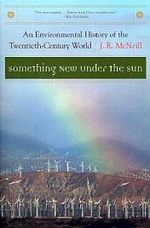
Development 1900 – 2000
| global population | increased | 4x | |
| global economy | increased | 14x | |
| industrial production | increased | 40x | |
| energy use | increased | 16x | |
| carbon dioxide emissions | increased | 17x | |
| sulphur dioxide emissions | increased | 13x | |
| ocean fishing catches | increased | 35x | |
| number of pigs (=meat eating!) | increased | 9x | |
| forests | decreased | 0.8x | decreased 20% |
| agricultural fields | increased | 2x | |
| blue whale | 0.0025x | only 0.25 % remain |
The change was much faster in the end of the century than in the beginning. In fact, increase was most often measured in percent of the previous year! If this percentage growth is constant, we have exponential growth! This means constant doubling time. This gets very soon out of hand. Exponential growth may be illustrated by anything from the number of McDonalds restaurants in the world to the consumption of paper.
In Western Europe, the strongest resource growth was after WWII, roughly between 1955 and 1975. During less than one generation resource consumption increased almost 3-4 fold for very many products: metals, fertilizers, fossil fuels etc. During this period, our societies went from fairly sustainable to affluent societies, affluent meaning with a large resource flow.
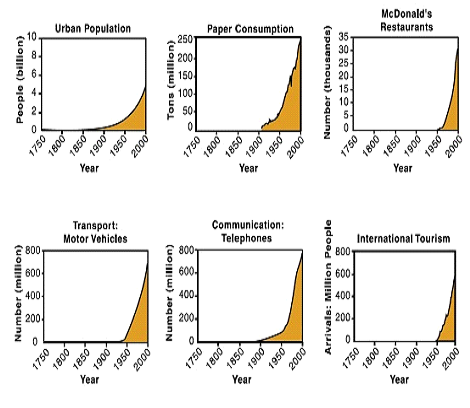 Resource consumption in Western Europe 1750 – 2000
Resource consumption in Western Europe 1750 – 2000
It is also during this period that the landfills (rubbish piles) of Europe increased tremendously! Around 1980 concern grew about what to do with the mountains of household waste. This was due to an increasing linear resource flow. The resources went from extraction to production, consumption, and waste in a straight line! It is simply a recipe for resource wasting! To make this more sustainable, we need to have cyclic resource flow. Recycling is an important part of sustainable development (See further Chapter 5c).
The huge increase in resource consumption was especially serious for non-renewable resources. For these there is a finite amount and when used up they are emptied. Most typical are the fossil fuels coal, oil, and gas. But all metals are non-renewable, and so is phosphorus. The extraction of these resources will come to a peak, after which production declines. Peak oil is the point in time when oil will be scarcer. It is happening about now. Peak phosphorus is the time when phosphorus production will decline, a few decades in the future.
Typical is that the accumulation of the end product from using the resource becomes a problem long before the resource is emptied. Thus, the accumulation of carbon dioxide from combustion of fossil carbon is one example, since global warming is caused by carbon dioxide as a greenhouse gas. Accumulation of phosphorus in the environment leads likewise to the problem of eutrophication. Non-renewable resources are further discussed below at Chapter 3c.
Also for renewable resources the consumption has been increasing steeply. Renewable resources are typically plants and animals with a specific reproduction time. If harvest is faster than reproduction, the resource may be destroyed or emptied. An example is fish. Ocean fishing increased about 40 times during the 20th century. It is more than the reproduction rate of the big fish. Today, about 90 % of the big fish in the oceans have been removed by fishing. A number of ocean fish species are threatened by extinction due to over fishing.
In addition to having a value by itself (see Chapter 6a) biological life on the planet in its whole is a resource for humankind as food and in many other ways. The very fast reduction of biodiversity can be seen as the destruction of a renewable resource almost entirely due to human society. It is dramatically illustrated when the early human killed, cooked and ate the last individuals of the European megafauna, mammoth. The European Bison almost faced the same destiny. See further Chapter 6a.
A process of similar kind is loss of organic topsoil, which is disappearing several hundred times faster than it is formed. This also contributes to increased carbon dioxide in the atmosphere. Loss of topsoil happens when the organic material of this black soil is exposed to the oxygen of the air and oxidizes. It may be due to too much tilling of soil, too much draining of wetlands and when soil erodes by wind or water. The process leads to desertification. (See further Session 6a). Topsoil forms slowly as growing plants are composting and rock is weathering.
Loss of forest, deforestation, is also a loss of a renewable resource as it is used faster than it regenerates. Especially, the tropical forest is shrinking at an alarming rate. Loss of forest leads to loss of biodiversity, loss of carbon to the atmosphere and loss of future possibilities to harvest timber and all other products of the forests.
Materials for session 3a
Basic level
- Read A Sustainable Baltic Region, session 3: Man and Materials Flows.
- Read A Sustainable Baltic Region, session 3: Nature’s Turnover of Materials.
- Read Environmental Science, chapter 2: How the Environment Works – Turnover of matter and energy.
Medium level (widening)
- Read Environmental Management Book 3, pages 17-28: Society and its Products.
- Read Environmental Management Book 3, pages 39-52: Resource Flow and Product Design in: Product Design and Life Cycle Assessment.
- Read Environmental Science, chapter 9, pages 259-266: A New Regime for Nutrient Turnover – Eutrophication.
- Read Environmental Science, chapter 12, pages 359-362: Metal Flows and Environmental Impact.
Advanced level (deepening)
- Read A Sustainable Baltic Region, session 3: The Valuable Metals.
- Read A Sustainable Baltic Region, session 3: Nutrient Flows and Environmental Threats.
- Read A Sustainable Baltic Region, session 3: The Unbalanced Carbon Cycle – A global problem.
References
Karlsson, S. (ed.). 1997. Man and Materials Flows. A Sustainable Baltic Region. Session 3. Baltic University Press. Uppsala, Sweden.
McNeill, J. R. 2001. Something New Under the Sun. An environmental history of the twentieth-century World. W. W. Norton & Company.
Rydén, L., Migula, P. and M. Andersson (eds). 2003. Environmental Science – understanding, protecting and managing the environment in the Baltic Sea region. Baltic University Press. Uppsala, Sweden.
BUP Sustainable Development Course
3b.
Limits to Growth – How long will the World’s natural resources last?
1968, after the awakening of environmental awareness in the 1960s, the Club of Rome, a Club of 100 influential individuals in science, politics and business, formed. The members were concerned about world future development. They asked themselves: “How long can we go on using increasing amounts of natural resources, without harming our societies?” The challenge to study the long term future and resource use was given to a research team at Massachusetts Institute of Technology, MIT, in Cambridge, USA led by two young scientists Donella and Dennis Meadows.
The team’s basic assumption was that all the different important trends in world development were inter-dependent and thus made up a huge system. This system was simulated, using a computer tool called systems dynamics, in a model called World 3. Enormous amounts of statistical information was collected and summarized in 5 main parameters: resource flow, environmental impact, industrial production, human population and food production.
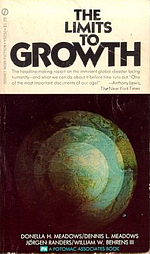
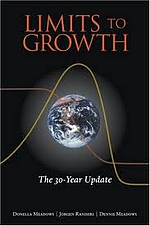 The result was published in 1972 in a small book called Limits to Growth. It showed that if no changes were made (=business as usual) all the parameters discussed would grow up to a point, when after a peak they would turn down. After that point we should expect a world with shrinking resources, less production, increased pollution, diminishing population etc. The model timeline were 200 years (1800-2100). The peak was, according to the model, to happen about 2050.
The result was published in 1972 in a small book called Limits to Growth. It showed that if no changes were made (=business as usual) all the parameters discussed would grow up to a point, when after a peak they would turn down. After that point we should expect a world with shrinking resources, less production, increased pollution, diminishing population etc. The model timeline were 200 years (1800-2100). The peak was, according to the model, to happen about 2050.
The Limits to Growth study became a key issue of discussion during the following years. It was translated into about 35 languages. Economists in general were critical; the developing world was critical. Environmental scientists saw it as a fundamental study and an important platform of the growing sustainability science. In 2004 the research team published a 30-year follow-up. Amazingly all the statistics, now with much improved data, and an additional number of parameters, confirmed the old conclusions, with the addition that the time for peak had come closer in time – about 2025 – as the resource flow had accelerated more than predicted. Now also economists agreed that the conclusion were valid. There are limits to growth!
One should not be surprised by the message that overuses of resources leads to an overshoot, followed by a peak and collapse. We have seen it many times in ecosystems, when populations of rodents or other animals collapsed because they overused the resource they lived on. Normally there is negative feedback, such as a carnivore hunting the population, but if this is missing there will be overshoot and collapse. Humanity does not have such negative feedback. We have to understand and restrict resource use ourselves. This alternative, to live in balance with the resources, is called dynamic equilibrium.
The Limits to Growth authors stressed that the predicted overshoot and collapsed was only to happen if nothing was done to change business as usual. They also stressed that it was not enough with more efficient resource use (decoupling) or relying on new technologies; changes in lifestyles would be necessary to change the path in a more sustainable direction.
During the 1990s, other research teams started to work on a similar theme. One was Canadian human ecologist William Rees and Swiss-born Mathis Wackernagel. They summarized how many resources every one of us uses (energy, food, timber etc, etc) recalculated into a biologically active surface on the planet called the ecological footprint, measured in global hectares (gha) and using a life cycle approach. In the world as a whole, there is about 1.8 ha per capita (2006 population). This is the carrying capacity of our planet. But some countries are using much more than that, e.g. Sweden about 6 and Poland about 4,5 ha/capita, while others, like Indian, use less.
Over the entire world, the footprint is about 2.7 ha/capita. We are in an overshoot since about 1980. This is manifested into the date when the resources of the planet produced that year are used up, called Earth Overshoot Day. In 2012 the Earth Overshoot Day was according to Global Footprint Network August 22nd. These calculations are not very exact, but it is not the most important. It is also expressed as the number of planets needed to support humanity if everyone lived according to some chosen group. Globally we use about 1.3 planets. If everyone lived like they do in the USA – the most resource using nation in the world – we would need close to 6 planets. If everyone lived like we do in the Baltic Sea region, it is almost 3 planets. WWF started the project One Planet Living describing what to do to reduce resource consumption to the level of one planet (1.8 ha) if everyone did the same.
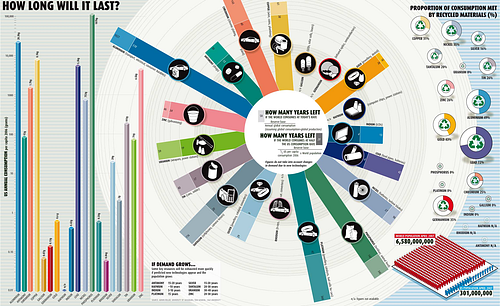 Most people get worried about how much energy reserves we have left, but as this graphic shows, that's the least of our problems. The real problem is the materials we use to make things. (click to enlarge)
Most people get worried about how much energy reserves we have left, but as this graphic shows, that's the least of our problems. The real problem is the materials we use to make things. (click to enlarge)
A more detailed study of a number of global parameters was done in the Planetary Boundaries project, undertaken by the Stockholm Resilience Centre. There the task was to define what are the safe space within which humanity must stay for a number of environmental and resource flows parameters. Nine such parameters were studied. They included nitrogen, phosphorus and carbon flows, ozone layer, climate change, ocean acidification, biodiversity etc. The authors concluded that we are within safe limits for some of them such as ozone layer protection, but outside for others, e.g. biodiversity, nitrogen flows and carbon dioxide emission.
They concluded that humanity is today a force, which dominate the planetary development, earlier only possible for geological forces. We have entered a new geological era, which they call the Anthropocene.
Materials for session 3b
Basic level
- Read Environmental Science, chapter 25, pages 769-770: The Prospect of Sustainable Development
Environmental Science, chapter 25: The Prospect of Sustainable Development (in Russian). - Earth Overshoot Day by Global Footprint Network.
- The Basics of Ecological Footprint. Calculate your own footprint!
- Read about The Club of Rom.
- Watch Limits to growth 40 years later lecture by Dennis Meadows (YouTube film).
Medium level (widening)
- The Planetary Boundaries article in Nature 2009.
- Get to know the One Planet Living project and find out how you may change your own lifestyle.
-
What was the real message in Limits to Growth?
Advanced level (deepening)
- The detailed Planetary Boundaries report Stockholm Resilience Centre.
Additional material
Dennis Meadows – Perspectives on the Limits of Growth: It is too late for sustainable development (YouTube film). A talk on the 40-year celebration of the publication of the Limits to Growth on March 1st 2012 at the Smithsonian Institution, Washington DC.
References
Meadows, D. H., Randers, J. and D. L. Meadows. 1972. Limits to Growth – How long will the World’s natural resources last? Signet.
Meadows, D. H., Randers, J. and D. L. Meadows. 2004. Limits to Growth: The 30-Year Update. Chelsea Green.
Rockström, J. et al. 2009. Planetary Boundaries: Exploring the Safe Operating Space for Humanity. Ecology and Society 14(2): 32.
Rydén, L., Migula, P. and M. Andersson (eds). 2003. Environmental Science – understanding, protecting and managing the environment in the Baltic Sea region. Baltic University Press. Uppsala, Sweden.
BUP Sustainable Development Course
3c.
Measuring and managing resource flows
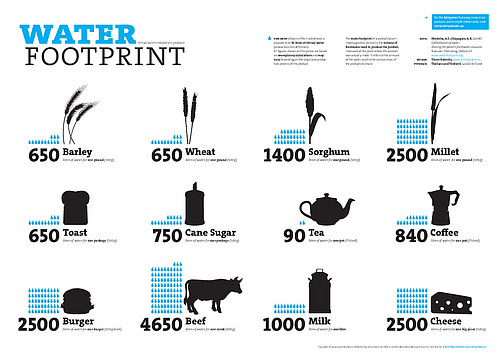 Water footprint of products (click for a larger image).
Water footprint of products (click for a larger image).
There are several ways to measure resource use. The best known may be the ecological footprint (See Session 3b) estimated in global hectares. Footprints may also be divided to show partial footprints. Carbon footprints specifically show carbon dioxide (or greenhouse gas) emissions, while water footprints specifically show water use for the product. Normally these footprints use a life cycle accounting and may come up with surprising results. Life Cycle Assessment (LCA) normally has resource depletion as one input parameter, so very many LCA reports include resource use.
Total Material Flow is the most exact measure of resource flow and reflects impact best. The Total Material Requirements (TMR) of nations consists of the Domestic Material Input (DMI), which is the resources used in the countries’ economies, and the export. Within the European Union 15 it is about 40 tonnes per capita and year, a fairly constant figure despite increased GDP. Some countries are higher, such as Germany with 70 tonnes per capita and year, while e.g. Poland is lower, ca 30 tonnes per capita and year (2002 statistics).
40 tonnes per capita and year corresponds to a person coming home from weekly shopping with about 300 bags full of material. You may ask, “Where are these tonnes?”. They are imbedded in the products, as the so-called ecological rucksack of the products. A laptop typically weighs 1 tonne if its rucksack is included. The rucksack of a product can be calculated using the materials intensity factors for e.g. metals, agricultural products etc. These data are available at the Wuppertal Institute for Climate, Environment and Energy, Germany, where also the rucksack (and MIPS) concept was developed.
The resource use may be calculated not only for products, but also for services. The measure used is called Material Intensity Per Service unit, MIPS. The MIPS depends on how a service is delivered. For example, if the service is transport from A to B, the MIPS will be very different for different modes of transport, such as car, bus, train, bike, or walking. The same is valid for the service of heating your flat or eating a lunch.
The Ecological rucksack and the MIPS include the life cycle of the product from resource extraction, energy use in the production etc. up to consumption. Further material consumption at the end of life of the product is not included, nor is the possible recycling. Still, the messages from the studies of material intensities are shocking. The leader of those studies, Friedrich Schmidt Bleek, therefore introduced the Factor 10 concept. It says that industrial nations need to reduce their material turnover by a factor of 10 (sometimes written Factor X) to reach sustainability. It accounts for that developing nations should be allowed to increase their resource use by a factor of 2 and the planet as a whole needed to reduce resource flow by a factor of 2.
The Factor 10 concept followed in the footsteps of the already established concept of Factor 4 – Doubling Wealth, Halving Resource Use. The Factor 4 concept was mostly asked for much improved resource efficiency in the word as a whole. The Factor 10 was more specific to the industrial societies and more difficult to accept. It is supported by UNEP, but not much used in the Baltic Sea region countries.
It is clear that we need to improve the resource flow on the Planet, in our societies and often in our personal lives. Resource flow management intends to limit and reduce the resource use for a product. The direct approach is to dematerialization a product, for example by making it smaller, or slowing down the flow by making it last longer, e.g. by making it easier to repair, by recycling the material and finally by substitution, using a different material which require less flow. There are a multitude of examples of how these principles have been applied.
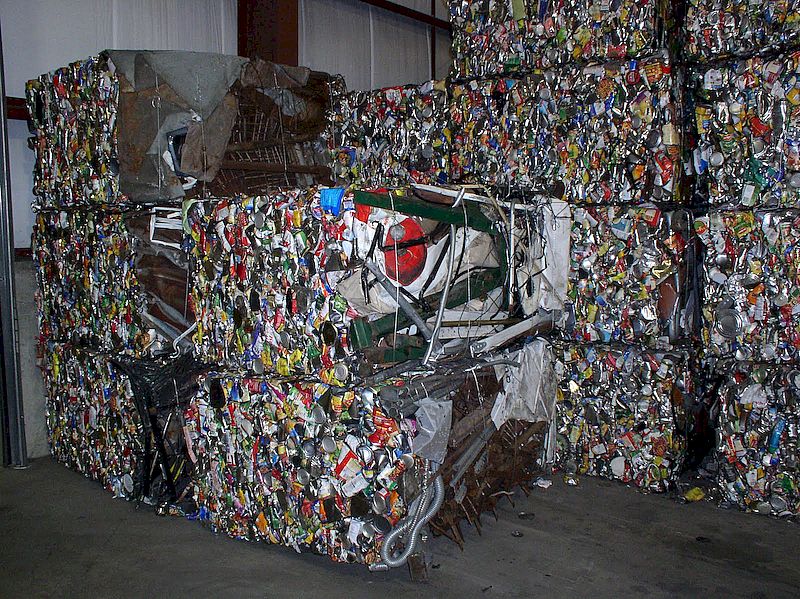 Steel crushed and baled for recycling in a recycling plant belonging to Central European Waste Management (Wels, Austria). Photo: blahedo.
Steel crushed and baled for recycling in a recycling plant belonging to Central European Waste Management (Wels, Austria). Photo: blahedo.
There are many approaches to the dematerialization of our societies. Most importantly, we need to remember recycling. With closed material flows instead of linear (from extraction to landfill) we may reduce the material flows very much. We should also consider owning and using the products together. When we use a common printer instead of our private, it reduces the resource flows. The same is valid for using public transport instead of a private car, or joining a carpool.
When a product, service or – more broadly an economy – is delivered with much less resource use than earlier, it is called decoupling. One example is that western economies have grown for at least some 20 years without the same increase in resource use. But it seems that the extra resources becoming available due to decoupling is used for a new activity, which increases resource use. This is called the rebound effect. Due to the rebound effect, we get relative decoupling but not absolute decoupling, which is what we need.
So far, we have not seen a society where resource use decreases significantly. The Limits to Growth research team admit that some decrease can be made by technical developments (e.g. introducing solar electricity), but it is not enough. Changes in lifestyle are needed. A number of policy instruments need to be used to develop the societies in that direction.
Materials for session 3c
Basic level
- Read A Sustainable Baltic Region, session 3, pages 23-30: Towards Sustainable Materials Management.
- Calculate the MIPS for a Product The methods are illustrated by MIPS of a woman’s Polo-neck jumper in Product Design and Life Cycle Assessment, pages 235-241.
Medium level (widening)
- Read Towards Sustainable Resource Management in the European Union by Stefan Bringezu, Wuppertal Institute.
- Read Factor 10: The Future of Stuff by Friedrich Schmidt Bleek.
- Read Chapter 2 Accounting for Material Flows and Chapter 3 Results, Implication and Conclusions in the Resource flows: the Material basis of Industrial Economies by World Resources Institute (pp 5-18).
- Get to know The Factor 10 Institute.
Advanced level (deepening)
- Study the 2009 monitoring report of the EU sustainable development strategy from Eurostat, Chapter 4 Sustainable Consumption and Production, pages118-147, especially pages124-128 (Domestic material consumption & Resource productivity).
- Read chapter 5, pages 49-59: The Myth of Decoupling in: Prosperity without Growth.
References
Adriaanse, A., Bringezu, S., Hammond, A., Moriguchi, Y., Rodenburg, E., Rogich, D. and H. Schütz 1997. Resource Flows: The Material Basis of Industrial Economies. World Resources Institute, Washington D.C.
Eurostat 2009. Sustainable Development in the European Union. Luxembourg.
Jackson, T. 2009. Prosperity without Growth – Economics for a Finite Planet. Earthscan Ltd, London, UK.
Karlsson, S. (ed.). 1997. Man and Materials Flows. A Sustainable Baltic Region. Session 3. Baltic University Press. Uppsala, Sweden.
Zbicinski, I. Stavenuiter, J. Kozlowska, B and H. van de Coevering. 2006. Product Design and Life Cycle Assessment. Book 3 in a series on Environmental Management. Baltic University Press, Uppsala, Sweden.
BUP Sustainable Development Course
Sida 6 av 15
